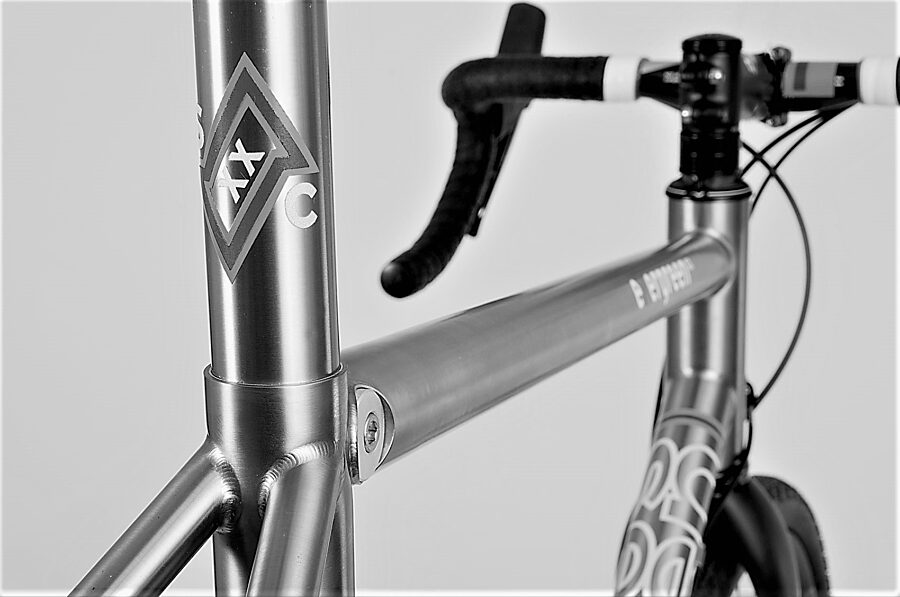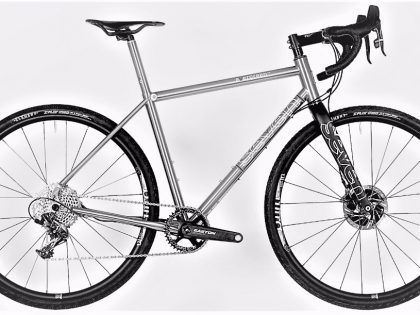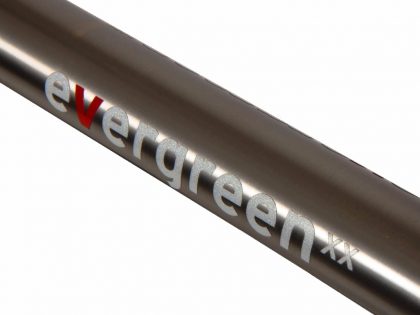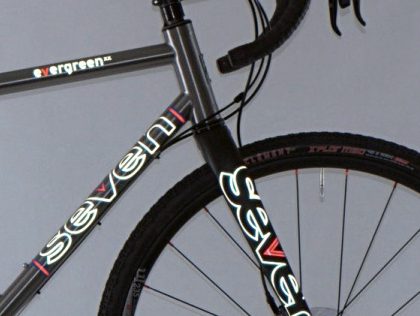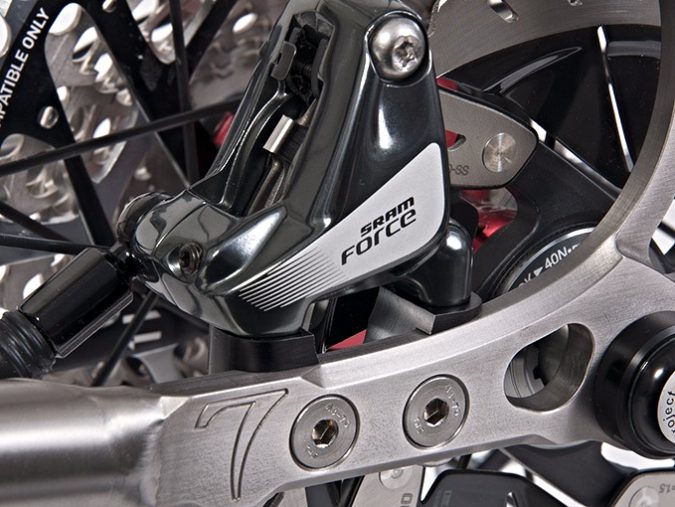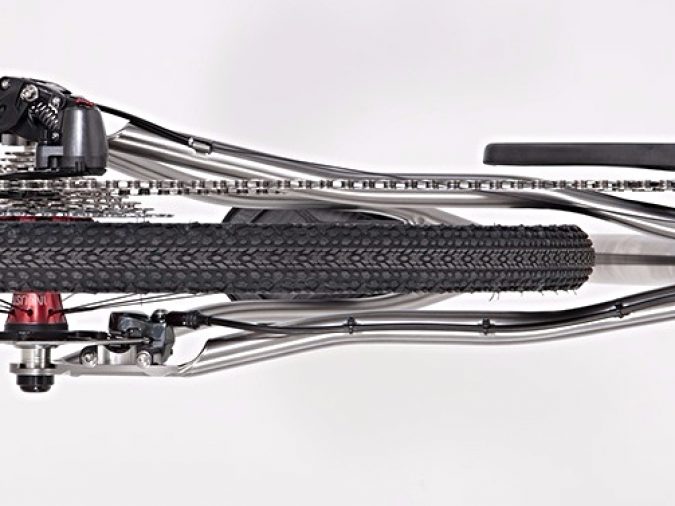What is XX?
Thinking More Deeply About Weight
There are three impacts that weight reduction in a frame (or component) can have on a bike:
- Sometimes reducing weight can mean improved performance. We climb faster on lighter bikes, and lighter bikes are easier to handle. They make steering with the body, instead of just the hands, more effective. Think “body English.
- Lighter can also mean more flexible. Flexibility can be good, but often it’s bad. The first Ti bike frames, for example, were thought to be too flexy, too “noodly.” Experienced bike builders understand how to make flex work for the bike, rather than against it. For example, lateral flex is often seen as a negative, while vertical flex is generally beneficial. That vertical flex improves traction and tracking. Riders at every performance level appreciate the comfort of a bike that absorbs shock vertically
- Lighter generally also means shorter service life. When pursued as an end in itself, weight reduction increases the incidence of warranty issues. Every Seven frame carries a lifetime warranty, so we avoid any weight saving feature that limits service life. Historically, that’s why our frames are not the lightest on the market. We have no interest in pushing the limits of durability or safety.
Generally, when chasing weight goals, the resulting frames exhibit all three of the impacts above, and we’ve all seen that as the industry has chased lower and lower frame weights in carbon road bikes.
The majority of Seven’s titanium SLX models take advantage of points one and two. while carefully avoiding service life challenges. Seven's SLX frames are a lot lighter than their SLs, and they offer a softer ride, too. This is a positive trait or a negative, depending on your size and how you ride, and we often steer larger and more performance oriented riders away from SLX frames. Every frame we build remains rider-specific, optimised for the person who is going to ride it.The base design goal with XX was to eliminate weight without sacrificing frame stiffness or performance, to use our years of experience building double and ultra-butted frames to push the level of refinement we can offer our riders.
Titanium re imagined -
Simply put, the XX is a complete rethinking of every part of the frame. Seven started from a cost-no-object perspective, and only when they had understood what was possible, made final decisions weighing cost-benefit analysis.
Although, the industry has used lightness as a primary selling feature for several decades, what we see is that every year frames get heavier. “Advances” in component technology too often weigh more than their predecessors: Disc brakes, thru-axles, tapered steerer forks, PressFit bottom brackets, wider tires, etc. They all add significant weight to a bike.
For XX, Seven has done a clean sweep of every aspect of the frame to remove any hidden grams from the past decade’s list of industry “improvements.” Seven are fortunate to have data from thousands of Seven bikes in the real world, so they are able to extrapolate which new features can be integrated without a single failure. On top of that, they have done extensive fatigue testing of new build techniques and applied all of that to the XX frame upgrade.
Step-change
The XX upgrade removes six to nine ounces (255 grams) from a typical Seven thru-axle, disc, SL or SLX frame without sacrificing ride characteristics or service life. From our perspective, this is the holy grail of cycling weight reduction. This is what XX delivers. Seven is cautious and perfectionist by nature. they have a flawless reputation to protect. In seven years we have not had one frame failure or material/weld defect. Hence when seven say they have engineered a step-change in what is possible with a titanium frame, it is entirely credible and exciting
"Simply put, the XX is a complete rethinking of every part of the frame. Seven started from a cost-no-object perspective, and only when they had understood what was possible, made final decisions weighing cost-benefit analysis."
Where does the weight go?
How are we able to remove 15-20% of the weight from a frame without negatively affecting performance? To begin with, we thought about every single gram, not ounces, grams. Single grams add up quickly.
Here are eleven XX design features that have no negative impact on performance – no loss in frame stiffness or durability:
Asymmetric dropouts.
By pairing standard non-drive, flatmount dropout with a non-matching, road thru-axle dropout, Seven save about 60 grams and also increase drivetrain stiffness. The non-drive dropout has to have a span of nearly 4” from axle-center to rotor-edge. It’s an extremely long dropout that is a lot heavier than a piece of tubing. The drive side dropout, on the other hand, only needs to be about 1.5” from axle to tube-end. The new asymmetric design is lighter, but it’s also stiffer (and Seven’s dropouts are already the stiffest in the industry).
Asymmetric chainstays
This saves about 6 grams and additionally increases drivetrain stiffness. Not only do the dropouts require non-mirrored chainstays, but Seven have pushed this to its limit by altering the chainring, tyre, and crank clearances specific to the drive and non-drive side of the frame. The chainrings on the drive side require more clearance than the non-drive side, which has no rings. These asymmetric stays save a few more grams but, more importantly, they increase drivetrain stiffness. Lighter and stiffer. Sometimes referred to as a win-win
Internal seat post binder
Saves about 33 to 45 grams. There are two aspects of this feature that reduce weight. First, the internal binder is about 15 grams lighter than a standard seat post binder. Second, the seat tube extension can be 2-3.5 cm shorter and therefore saves another 18-30 grams. Pure bicycle architecture.
30.9mm seat-post sleeve
Seven use a 30.9 mm seat post sleeve on the XX - the thinner sleeve, with the larger diameter post saves 30 grams over a standard 27.2 mm seat post sleeve. And it is stiffer.
30.9mm Seat-post
A bit counter-intuitive, but they save more weight by using a titanium oversized 30.9 mm seat post. Depending on the length of the seat post you save a few grams in the post itself but slotted into a 30.9 seat post sleeve provides valuable weight savings while not sacrificing any ride quality or performance.
Bottom-bracket machining
More aggressive bottom bracket machining saves 14 grams and has no impact on frame stiffness. Seven have traditionally machined their raw bottom bracket shells down after welding to reduce weight, but now they have pushed our CNC program to shave every gram from the inside of the bottom bracket shell without reducing service life.
Enlarged breather holes
Seven saves about 12 more grams by enlarging the frame’s breather holes, the holes that allow gas to pass between the various tubes during welding. They optimise the breather holes for each frame depending on tube diameter and wall.
Enhanced butting
Revised tube butting saves about 30-45 grams. Seven has introduced a new butting process that enables them to tune the butting to remove an addition 1.5 ounces Seven are different because all these engineering processes and R&D are in-house.
Modified tube profile selection
This saves between 30 and 60 grams. For XX, Seven have pushed Seven’s proprietary approach to tube profile selection further to take full advantage of their US-milled titanium’s core strengths.
Modified flat-mount adaptor
A modified our flat mount brake adaptor saves 13 grams, without altering braking response.
More compact geometry
A slightly more compact frame design saves about 18 grams while increasing frame stiffness.

